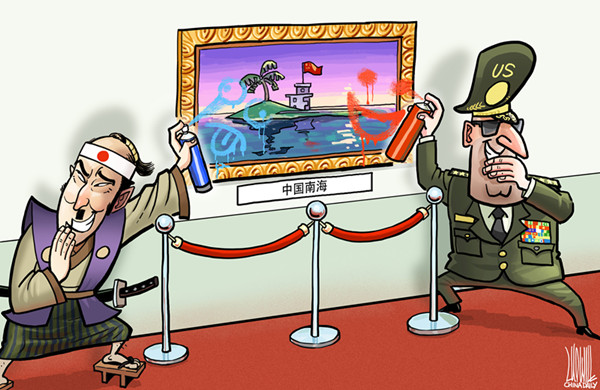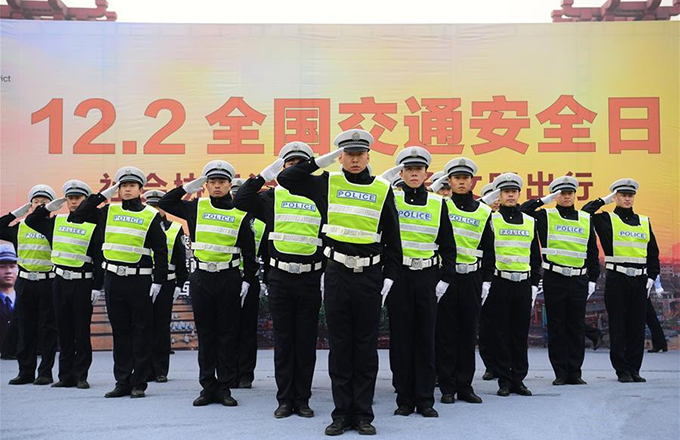Building the road of sharing new opportunities and prosperity
Chinese President Xi Jinping on May 15, 2017 at the One Belt, One Road (OBOR) Forum held in Beijing urged major multilateral institutions to join the new Belt and Road Initiative which is the centerpiece of economic, political, and strategic policy framework of the Fifth-Generation Leadership of China under President Xi Jinping. Addressing other world leaders at a summit on the initiative in Beijing, Xi Jinping said it was necessary to coordinate policies with the development goals of institutions including the Asia-Pacific Economic Cooperation (APEC), ASEAN, African Union and the European Union.Xi Jinping pledged $124 billion at the summit for the new Silk Road which aims to bolster China's global leadership ambitions by expanding links between Asia, Africa, Europe and beyond, as the United States President Donald Trump promotes “America First”. Some have suggested that OBOR is a version of China’s Marshall Plan. Others have argued that this is one way to expand China’s economy and invest China’s surplus foreign reserves for its greater economic and strategic advantage. Irrespective of these comments, the initiative has been tagged as one of the biggest narratives in Asian business, economic, and diplomatic program that could transform and offer tremendous opportunities for global economic cooperation. President Xi asserted that OBOR “should be jointly built through consultation to meet the interests of all, and efforts should be made to integrate the development strategies of the countries along the routes. It is not closed but open and inclusive; it is not solo by China but a chorus of all countries along the route”. The initiative tends to develop prosperity for underdeveloped parts of China, particularly in the west of China, as well as increase integration, connectivity and economic development along the routes. The “Belt and Road” initiative has continued to expand with over 95 nations and international organizations involved; over 69 nations along the route have signed cooperative deals with China. The initiative is expected to increase fresh opportunities which include the promotion of enhanced policy coordination among the various countries along the routes, financial integration, trade, liberalization, and people-to-people connectivity. China’s effort to implement this initiative will have a significant effect on the region’s economic architecture – patterns of regional trade, investment, and infrastructure development.
These opportunities will be in the short, medium, and long term and several of the more immediate opportunities will be within China itself as it gears up to deliver on the OBOR Initiative. Most Chinese provinces along the routes are developing their own OBOR infrastructure plans as well. Additionally, there will be opportunities in other several sectors such as agriculture, energy and environment, e-commerce, healthcare and life sciences. Certain provinces such as Xinjiang and Fujian are positioned as “core areas” of the OBOR Initiative due to their geographical locations. Xinjiang aims to become a financial hub in West China and Fujian will focus on the further development of its logistics, shipping, and maritime sectors. Several western regions, such as Chongqing, Shaanxi, Sichuan, Xinjiang, and Yunnan will be chiefly focused on infrastructure and urbanization projects and expanding international trade opportunities. Some underdeveloped western provinces that have excellent natural and agricultural resources, such as Gansu, Ningxia, and Xinjiang, will need to upgrade their technology and improve productivity and efficiency. Eastern coastal provinces such as Fujian, Guangdong, Jiangsu, and Zhejiang are anticipated to present new opportunities in more advanced sectors, such as financial and professional services, shipping and logistics, advanced manufacturing, e-commerce, healthcare, and life sciences.
I believe the potential exists for powerful partnerships between African businessmen and Chinese businessmen, playing to their respective strengths. A wide range of business models may be deployed, including joint partnerships, technology transfer, investment funding, and changing supply chains. There are several commercial opportunities that Chinese and African businesses should seize with both hands. Africa remains the last untapped opportunity, especially southern and eastern Africa and, although both areas are starting behind numerous nations, they have huge market potential that should not be underestimated. The OBOR initiative will indeed reinvigorate eastern and southern African and will create a fresh source of motivation. Chinese and African businesses must recognize this possibility and utilize the opportunities as they present themselves. Most Chinese investors are realizing the opportunities OBOR initiative is presenting because more Chinese investors are now displaying interest in ramping up their African investment, attracted by soaring urbanization and consumerism across Africa; caveat that there remains “red tape and poor infrastructure”. Speaking of infrastructure, sector opportunities will initially be in the major sectors of infrastructure, financial professional services, advanced manufacturing, transport and logistics. Infrastructure projects will play a significant role in linking China with African countries along the routes.
Furthermore, China is planning to shift part of its production bases abroad, but this would require that the necessary infrastructure exists, and the right policies are in place, so as to absorb these investments. The OBOR initiative is anticipated to stimulate African growth by snowballing infrastructure development. The economic opportunities created by China’s OBOR dealings with African nations are numerous. The initiative will bolster the construction outlooks of African nations along the route via the development of substantial transportation, and physical infrastructure. Infrastructure development is one area in the OBOR initiative, which is closely associated with China’s need to bolster exports, utilize its excess capacity in construction industries, and stimulate China’s slowing economic growth. In late December 2015, at the Forum on China-Africa Cooperation (FOCAC) Summit in Johannesburg, China promised to lend Africa $US60 billion, of this enormous amount, more than half of the money will be channeled towards infrastructure construction in Africa. China is committed to dozens of large-scale infrastructure investment in Africa, in power generation sector, railway, highway, and aviation network. These constructions will help link capitals of all African countries and enhance Africa’s industrialization and economic integrations. This is what China as a major power and a sincere friend of Africa should be responsible for, and similarly, it stimulates the Sino-African economic and trade cooperation development.
Xi puts forward 10 major China-Africa cooperation plans dedicated to promoting the Sino-African relationship for the upcoming three years (2015-2018) during the FOCAC meeting in Johannesburg. Industrial cooperation, mainly China-Africa capacity cooperation and boosting Africa’s industrial development, is among the 10 plans. Connectivity and industrialization are a priority to realize the Agenda 2063. So, it could be argued that OBOR in Africa is timely and crucial in determining the Agenda 2063 to create the ‘Africa we want’. The recent internalization of the renminbi is also anticipated to have a positive impact on African markets, giving “emerging markets an important alternative when it comes to currency investment and hedging. In Africa, regional constraint associated with currency fluctuations and a frequent shortage of the US dollars’ liquidity could ease a little now, which could benefit numerous African economies.
OBOR initiative comes with several opportunities but also results in an array of challenges. Like any cross-border initiative, the OBOR initiative will require wise diplomacy to manage the relationship with the various nations and careful planning to scale up effectively. Each nation along the OBOR route faces a unique combination of risks and challenges. Numerous nations face macroeconomic risks, owing to exchange rate volatility, large debt burden, and unsustainable economic structures. On the microeconomic level, risk includes, for example, weak banking sectors; also, African nations have some of the slowest growth rates globally. The initiative will also encounter challenges in terms of infrastructure regarding the nations it will pass through. This is as a result of the fact that numerous nations in the OBOR region are subject to frequent political upheavals which have an influence on policy, the implementation and success of projects. Also, OBOR involves diverse nations of dissimilar cultures, they will need to have a better understanding of the different cultures and languages. They will have to see each other as the same and not Muslim, Buddhist, Christian and Hindu. They need to resolve issues peacefully and work collaboratively to be able to share the prosperity provided by OBOR. Although there are some challenges, I think there are some possible ways to navigate these challenges. First, no infrastructure project should be pursued without careful consideration of its financial cost, benefits as well as its ecological impact; secondly, the provision of funding for projects must strictly adhere to market rules; and thirdly, the Chinese government needs to reinforce the guidance of the crisis management and exit strategies. Realizing the OBOR initiative will not be easy; however, China has all the tools it needs to make the initiative successful. Overall, the OBOR will be a positive strategy for African nations because Africa is in dire need of capital for infrastructure development, and OBOR provides the best platform to pursue this opportunity that African can use to create prosperity.
Ehizuelen Michael Mitchell Omoruyi is a researcher at the Institute of African Studies, Zhejiang Normal University.
























